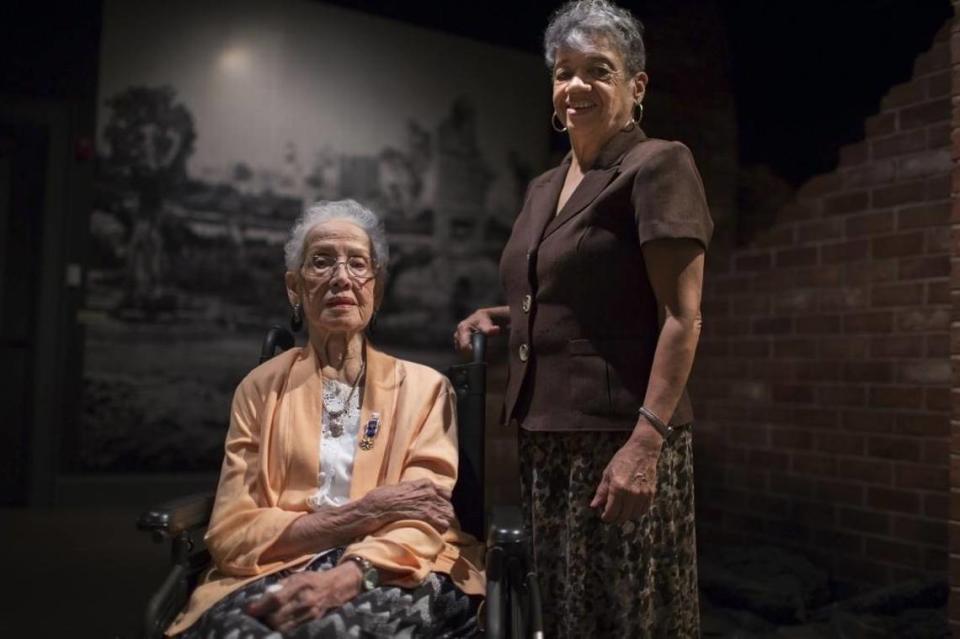NC’s ‘human computers’ get their due on historical marker in downtown Raleigh
They are known for their work in the Manhattan Project and other military programs or in hives of space-race activity such as NASA’s Langley Research Center in Virginia.
But some of the thousands of women mathematicians who performed the calculations needed to win World War II and send men into space were from North Carolina.
On Friday, the state unveiled a highway historical marker honoring the so-called “human computers” outside the N.C. Museum of Natural Sciences in downtown Raleigh.
At least 18 of the human computers were graduates of Meredith College in Raleigh, where students in Dan Fountain’s public history class did the research that went into the proposal for the marker. Fountain said the women mathematicians who contributed to the nation’s achievements in space have not been celebrated as they should.
“Acknowledging women’s contributions helps correct these omissions but, more importantly, tells the full historical story,” Fountain wrote in an email. “Women have long made meaningful contributions to our state and society, and it’s high time that we work to incorporate them more fully into our understanding of the past.”
For centuries before electronic calculators and computers, humans performed the mathematical calculations needed for science and engineering. During World War II, with many men conscripted, the military relied increasingly on women mathematicians for what were considered rote and unglamorous tasks.
During the Cold War, the government continued to hire women in part because it was thought men simply did not have the patience to do the “long and tedious” work of math, according to a history of the Dryden Flight Research Center in California.
Virginia Tucker from Hertford in Perquimans County went to work at the new computer pool at the Langley aeronautical research center in Virginia in 1935. When the war started, Tucker oversaw expansion of the pool and recruited extensively throughout the South, bringing in many fellow North Carolinians, according to the online essay that accompanies the new historical marker.
Among the best known of the human computers are the Black women who worked on the space program at Langley during segregation and were featured in the book “Hidden Figures” by Margo Lee Shetterly. A movie based loosely on the book focused on three of the women; one of their contemporaries was Christine Barnes Richie, a Wilson native who graduated from what is now N.C. Central University.
Also featured in the book, but not the movie, was Christine Darden, who grew up in Monroe east of Charlotte and joined Langley in 1967. Darden went on to become an aeronautical engineer, earned a Ph.D. and became an expert on supersonic flight and sonic booms.
None of the women’s names will appear on the silver cast-aluminum marker with black lettering in front of the science museum. There simply isn’t enough room.
The text of the new marker reads:
“Human Computers. Women mathematicians, many from N.C., executed complex calculations for U.S. military and NASA, 1941-1975, during WWII and the Space Race.”
Countless girls and boys will see the marker when they visit the museum, Fountain says.
“This will both educate them about the role that women played in meaningful national achievements as well as let young women know what is possible for them to pursue in life,” he wrote. “It will equally let young men know that women have been key contributors to history and should never be overlooked or excluded.”
There are more than 1,600 highway historical markers in North Carolina under a program created by the General Assembly in 1935 and run jointly by the state Department of Transportation and the Department of Natural and Cultural Resources.



